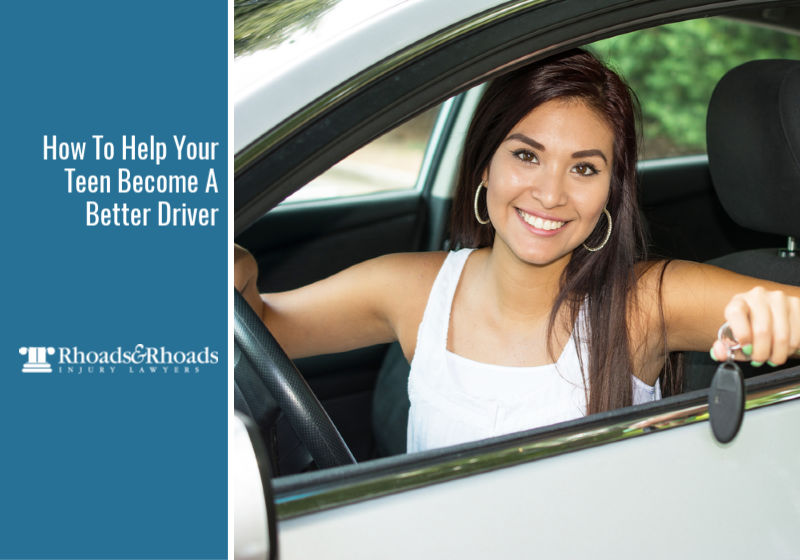
Key Points of This Article:
- The risk for fatal teen crashes increases by 17% during the summer months for young, inexperienced drivers.
- Nationwide, seven people died each day in teen-related summertime crashes from 2008 to 2018.
- Parents remain the best line of defense to keep everyone safe behind the wheel by educating teens on the dangers of distracted driving, and the impairing effects of alcohol and marijuana, but also by modeling good driving behaviors.
- A 2020 study by AAA shows 72% of teen drivers admitted to having engaged in risky behaviors such as speeding or texting while driving.
Kentucky’s Teen Drivers Are at Greatest Risk of Fatal Accidents During the Summer Months
As motorists return to the road after months of quarantine, remote work, and virtual schooling, so does the risk of an increase in teen driver induced accidents during the “100 Deadliest Days,” the period between Memorial Day and Labor Day. During this time, the average number of deadly teen-related crashes climbs 17% compared to the rest of the year because young drivers are on the road more often.
- Kentucky has one of the highest teen crash rates in the nation even though they only account for 6% of its drivers, according to the Kentucky Transportation Cabinet.
- AAA Bluegrass says the top causes for fatal summertime crashes involving teens include drug or alcohol impairment, speeding, and distractions related to technology.
The group of young drivers also tend to make risky, inexperienced choices like aggressive lane changing, running intersection stoplights, and being distracted by cell phones and passengers.
2020 Survey Shows Majority of Teens Engage in Bad Driver Behaviors
According to the new AAA Foundation Traffic Safety Culture Index, about 72% of teen drivers aged 16-18 admitted to having engaged in at least one of the following risky behaviors in the past 30 days:
- Speeding Over 10 mph (residential street): 47%
- Speeding Over 15 mph (freeway): 40%
- Texting While Driving: 35%
- Red-Light Running: 32%
- Aggressive Driving: 31%
- Drowsy Driving: 25%
- Driving Without a Seatbelt: 17%
The motor vehicle accident attorneys at Rhoads & Rhoads want all teens to start their driving experience by learning and practicing good driver behaviors. One way to do this is by asking parents to play an active role and getting more involved. Parents can help reduce the prevalence of summertime accidents by coaching their teens to slow down, stress the importance of driving sober, how to ignore distractions and be prepared for changes in traffic patterns, and how to avoid all the temptations that create bad driver behaviors. Modeling good driver behavior and keeping an open dialogue related to the risks and consequences associated with risky driving is also a good start.
Six Safe Driving Lessons for New, Young Drivers
It can help reduce collisions and minimize the risk of related crash fatalities for all road users when a parent chooses to become involved in their teen driver’s skill training. As you take the road with your young driver at the wheel, could you support them with these six lessons?
Lesson 1: Know & Prepare Your Vehicle
- Adjust the vehicle to the driver (seat position, steering wheel, head restraints, mirrors, etc.)
- Buckle up
- Start the habit of avoiding distractions and putting mobile phones in a purse, backpack, or in the backseat (somewhere out of the driver’s reach)
- Start in a large parking lot and drive around the outside edge: 10–15 mph, practicing steering and braking
- Take a short drive on an uncrowded residential street, focus on being smooth, and looking ahead
Lesson 2: Parking & Braking
- When braking, be smooth and check traffic behind
- Practice parking in an empty lot
- Mainly look directly over your shoulder when backing up
- Always keep your foot on the brake when backing up
- Focus on precision, not speed
Lesson 3: Speed
- Practice adjusting speed based on the three main factors:
- Visibility (day, night, fog, etc.)
- Amount of nearby traffic
- Road conditions (dry, wet, etc.)
- Always know the speed limit
- Never rush through an intersection light change
Lesson 4: Looking Ahead & Sharing the Road
- Practice anticipating what might become a hazard, such as:
- Pedestrian stepping into the road
- Car pulling out from parking lot
- Cars hidden behind larger vehicles
- Construction zones
- Maintain a “Visual Control Zone” by looking 12–15 seconds ahead
- Share the road with motorcycles and big trucks
Lesson 5: Following Skills & Space
- Drive 3–4 seconds behind the vehicle ahead (+1 second for nighttime, rain, etc.)
- Keep open space between lane markers and other vehicles
- When stopping behind a vehicle, be sure the rear tires, license plate, plus some pavement are visible
Lesson 6: Driving in Different Conditions & on Different Types of Roads
- Rain
- Ice
- Wind
- Snow
- City streets
- Country roads
- Interstates
- Suburban roadways
These lessons and other helpful tips are highlighted in AAA’s Coaching Your New Driver free four-page guide to help parents coach their teens on how to drive safely. We also have a teen driver section on our blog with information to support young drivers and their families.
Texting While Driving is Still a Worrisome Teen Driver Behavior
While all distractions can endanger drivers’ safety, cell phones are often the most dangerous because they require all three types of distraction to be used. AAA officials say about six in 10 crashes involving young drivers result from distractions, including sending and reading emails and texts on cellphones or social media use.
- Visual (taking your eyes off the road)
- Manual (taking your hands off the wheel)
- Cognitive (taking your mind off driving)
In Kentucky, it is against the law for a driver to text while the vehicle is in motion. For young drivers under age 18, no use of personal communication devices is allowed while the vehicle is in motion.
The accident lawyers at Rhoads & Rhoads, located throughout western Kentucky, can help if you or someone in your family has been seriously injured or killed in a distracted driving crash or by a reckless driver. It is our goal to help you recover the compensation that you need to get through this difficult time.
Contact Rhoads & Rhoads Car Accident Lawyers – No Recovery, No Fee
Take advantage of our free initial consultation and discuss your case with us. There is no payment required upfront, and there is NO RISK involved. Call us at 888-709-9329 to schedule your consultation today.
Watch: Learn About Rhoads & Rhoads Attorneys in Henderson County


